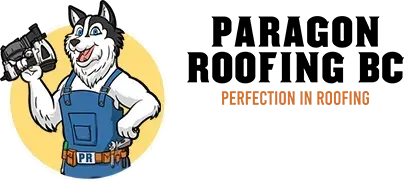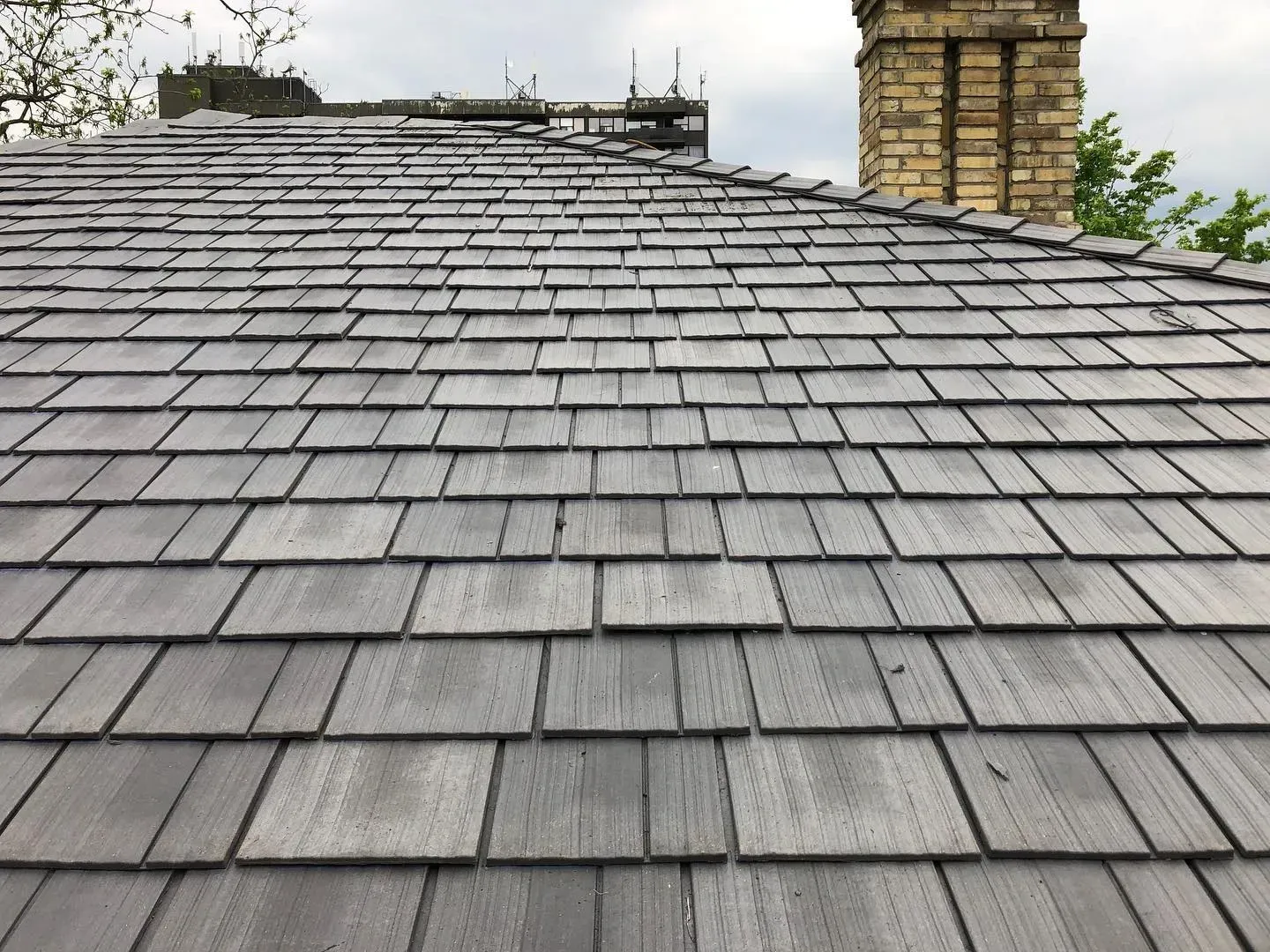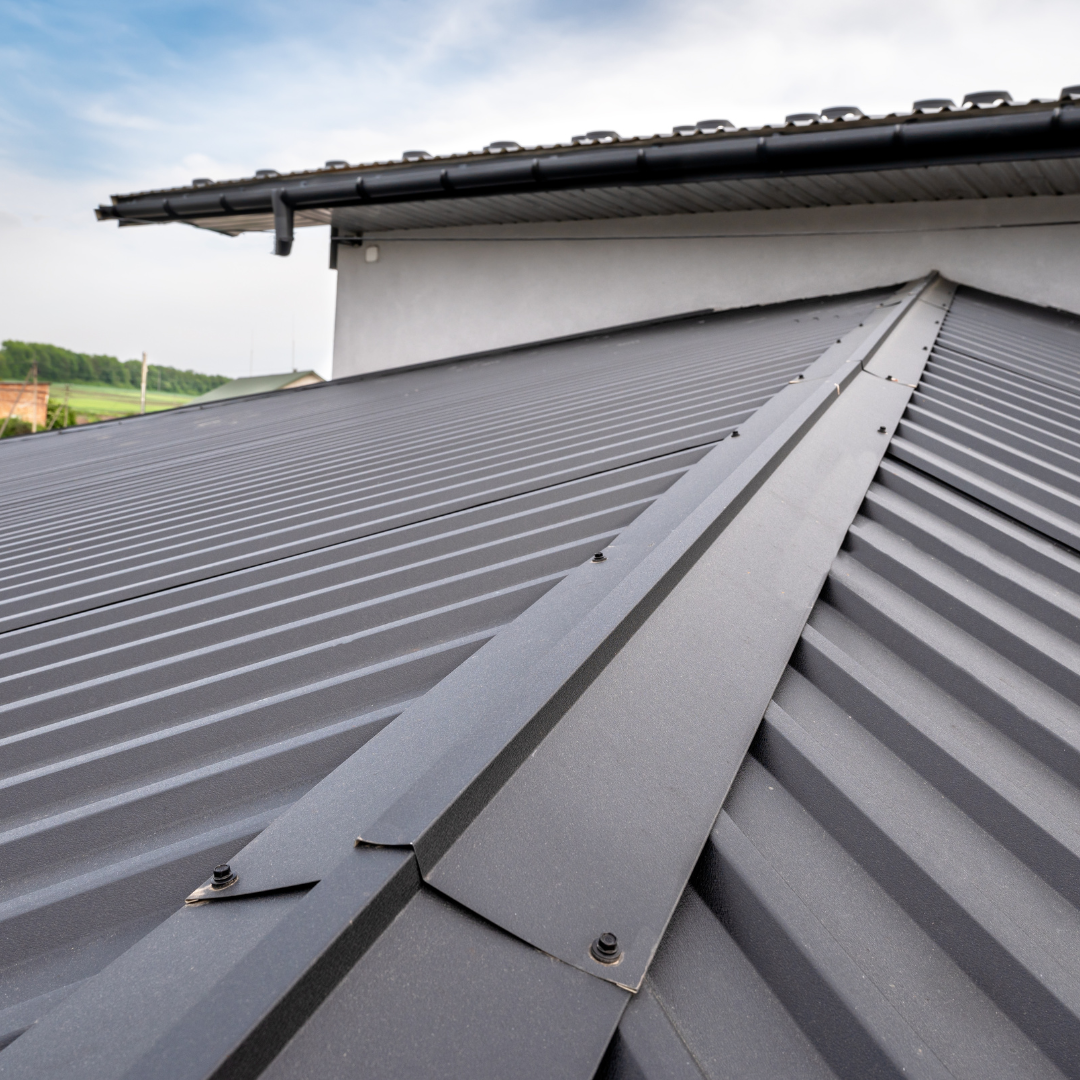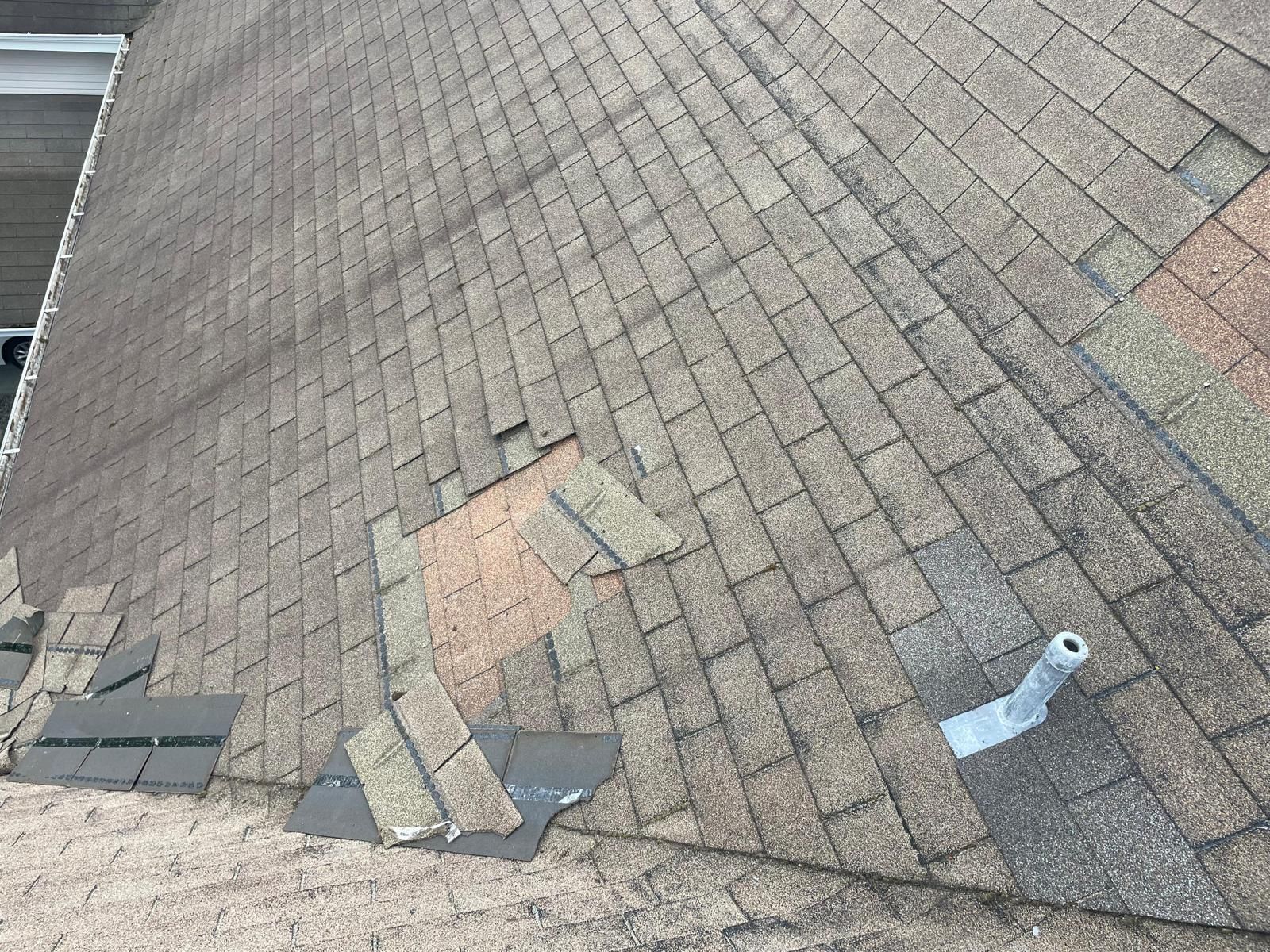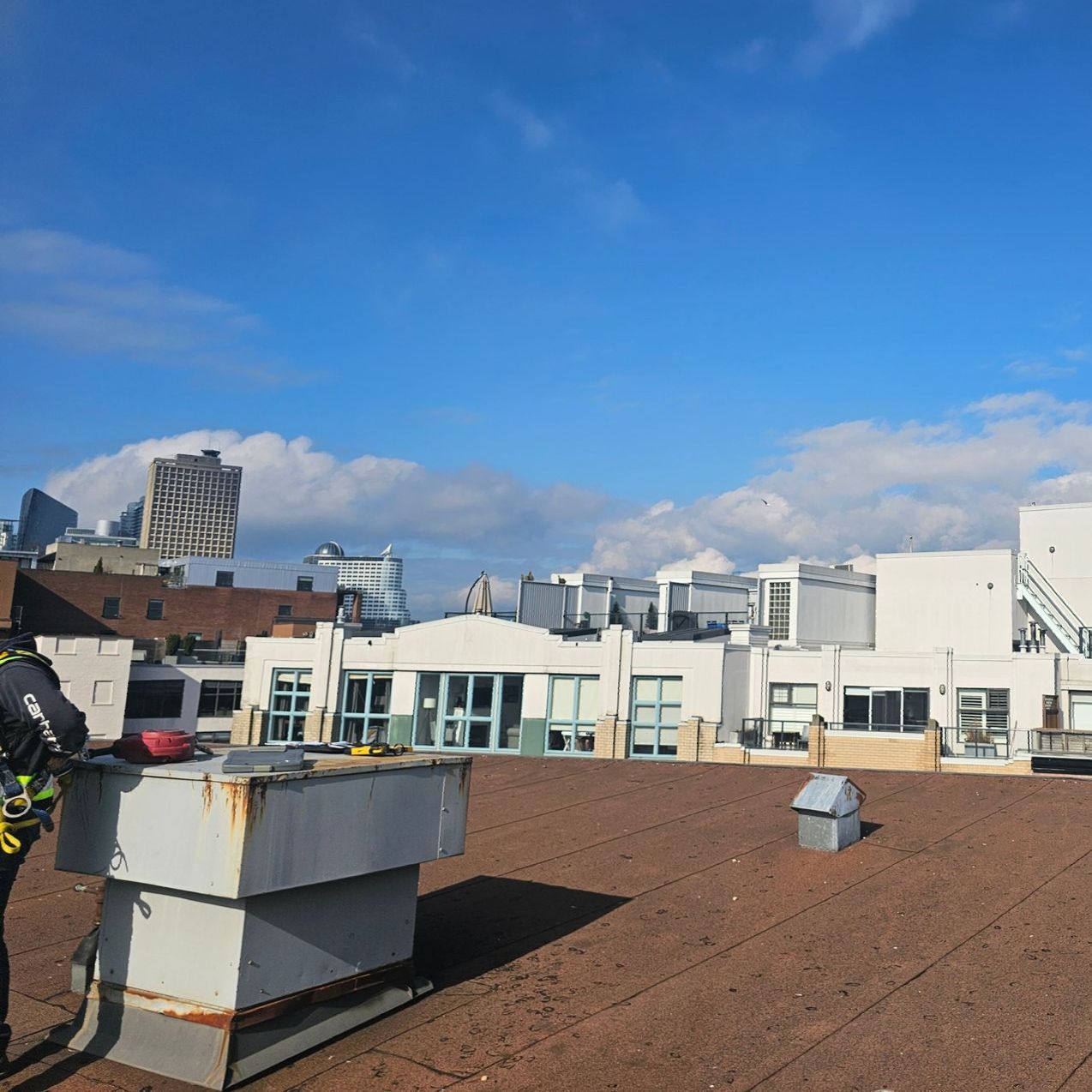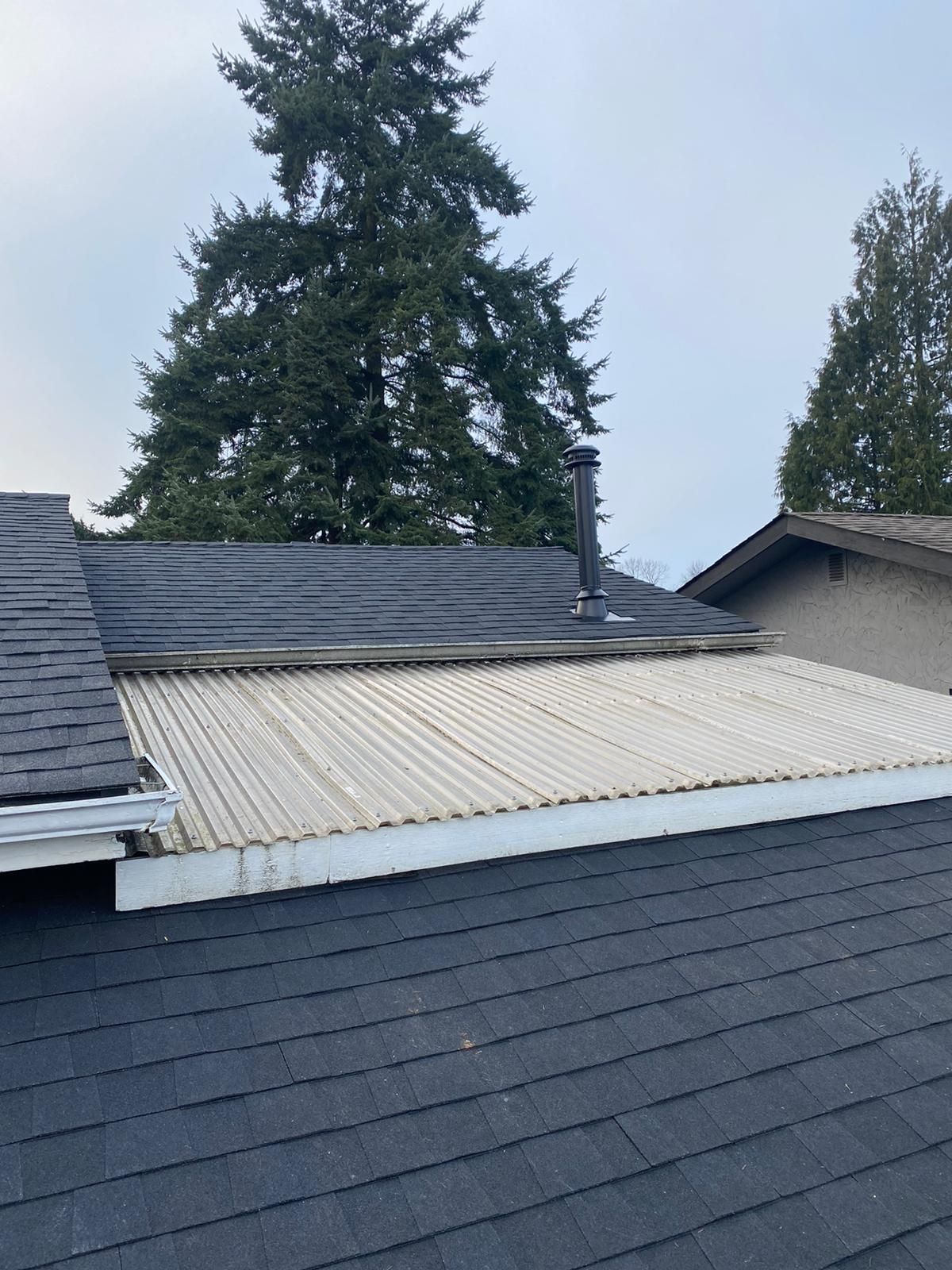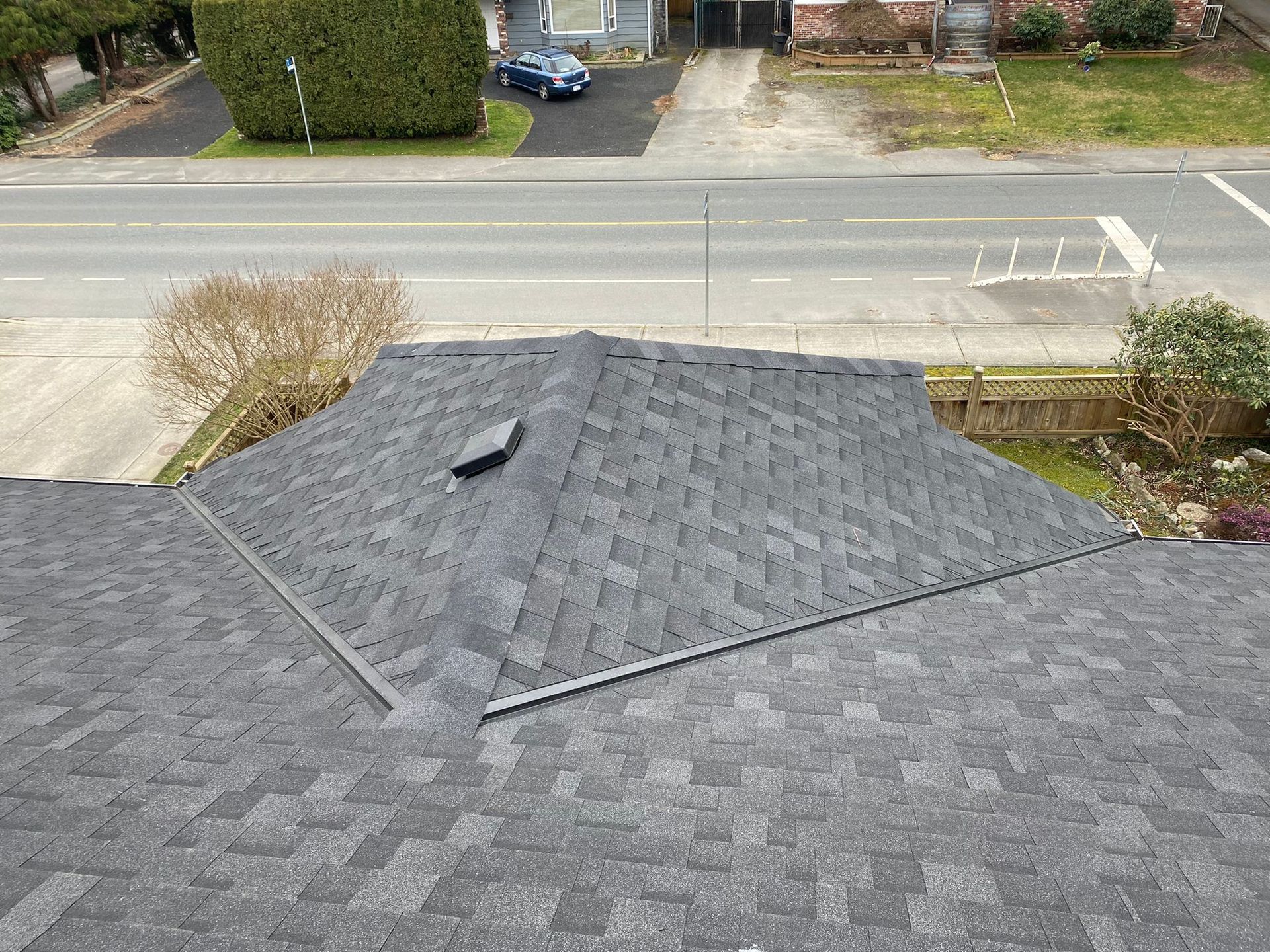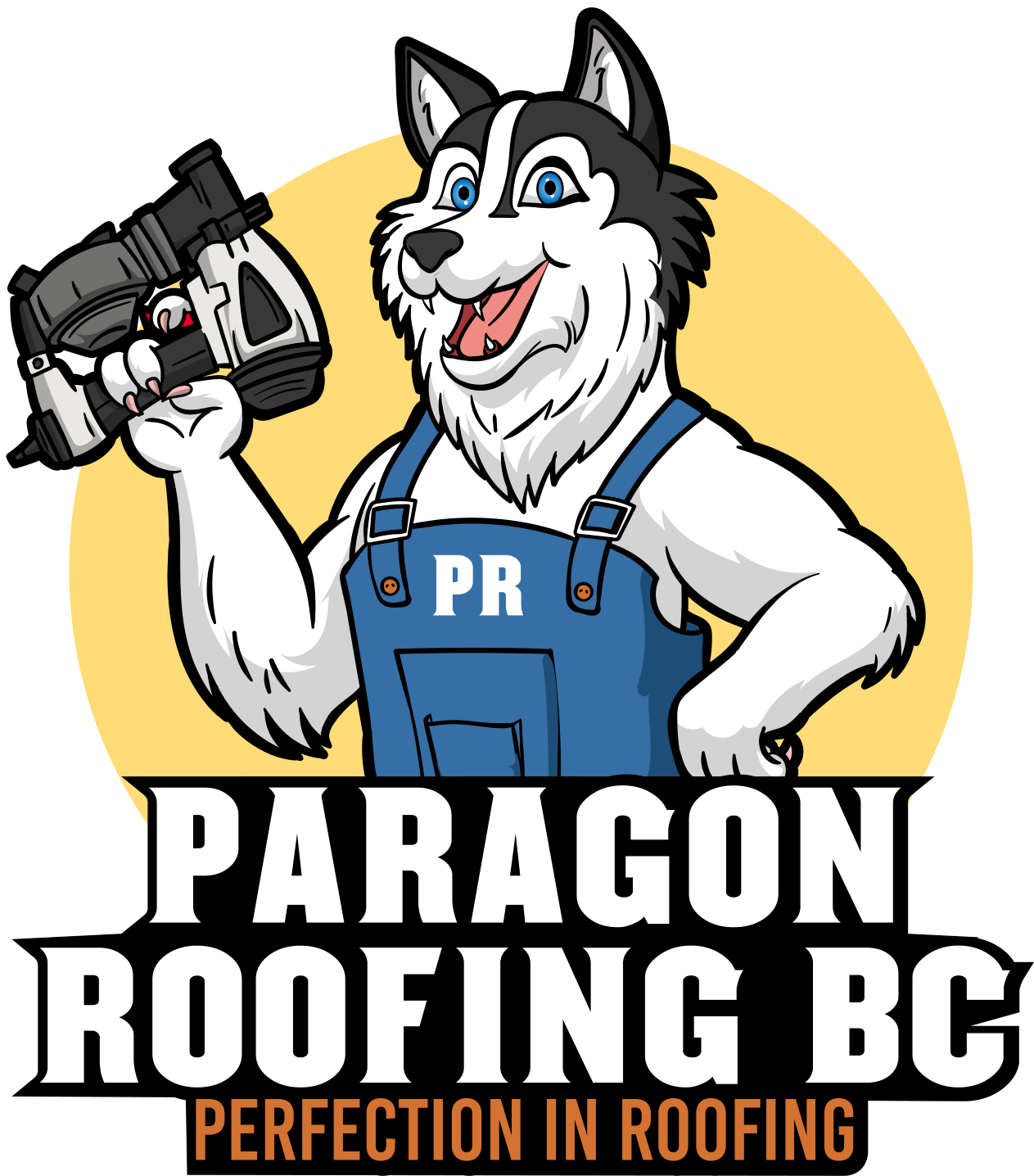Benefits of a Professionally Done Roof Replacement in Vancouver
A proper Vancouver roof replacement doesn’t just “swap shingles.” It rebuilds your home’s first line of defense against one of the wettest, most unpredictable climates in Canada. When the work is done right—with real ventilation upgrades, new flashings, proper underlayment, and neighbourhood-matched materials—you end up with a roof that performs quietly in the background instead of starring in constant repair dramas.
Leak Protection Through Vancouver’s Heavy Rain and Wind Storms
When atmospheric rivers hit, the roof becomes the difference between a normal night and a soaked ceiling. A professionally rebuilt system seals valleys, tightens flashing details, upgrades the underlayment package, and eliminates the weak points where most Vancouver leaks start—chimneys, skylights, and wall transitions.
A replacement done to modern standards gives your home real resilience against sideways rain, gusty micro-storms, and weeks of nonstop moisture.
Better Energy Efficiency, Comfort and Attic Health
Ventilation and insulation upgrades are often the unsung heroes of a roof replacement. With balanced airflow, fresh baffles, new vents, and sealed penetrations, the attic stops trapping moisture and starts regulating temperature the way it should.
The result? Lower heating bills, cooler summers, reduced condensation, and dramatically healthier attic conditions—especially in older Vancouver homes built before modern airflow rules existed.
Stronger Home Value and Better Buyer Confidence at Resale
A new roof instantly strengthens resale value because buyers fear exactly one thing: hidden moisture. When they see a recent replacement backed by photos, clear documentation, and modern materials, their confidence spikes—especially in neighbourhoods with aging housing stock like East Van, Kits, or Main Street.
Homes with new roofs simply sell faster and with fewer objections.
Peace of Mind Every Time a Rainfall or Wind Warning Hits
A proper Vancouver roof replacement eliminates the background stress that comes with every nasty forecast. No more checking ceilings, worrying about valleys, or wondering whether past repairs will hold up.
Just a roof that stays quiet, tight, and predictable.
Problems We Solve with Roof Replacement in Vancouver
Every homeowner has a “story” that brings them to a replacement—some dramatic, some subtle, all fixable with the right rebuild.
Chronic Leaks Around Chimneys, Skylights and Wall Intersections
These are the three most common sources of water intrusion in Vancouver. Bad counter-flashings, reused metal, missing step flashings, or outdated skylights let moisture find its way inside. A full reroof rebuilds these areas from scratch, correcting old errors and eliminating leak points for good.
Moss-Covered, Curling or Granule-Loss Shingles That Won’t Survive Another Winter
North-facing slopes, shaded lots, mature trees—Vancouver’s climate eats shingles alive. Moss holds moisture, granule loss exposes asphalt, and curled tabs let wind lift entire sections. When shingles hit this stage, repairs are a band-aid. Replacement restores the entire weatherproof system.
Poor Ventilation Leading to Ice Dams, Condensation and Mould
Trapped attic air condenses against cold sheathing, especially in areas like North Van, Deep Cove, or shaded Burnaby lots. Over time this leads to rot, mould, and early roof failure. Replacement gives us the chance to fix the airflow properly—balanced intake, solid exhaust, sealed bypasses, better insulation.
Old, Layered-Over Roofs That No Longer Meet Vancouver Standards
Many Vancouver homes still have two layers of shingles or patchwork built over old material. That adds weight, traps moisture, and hides rot. A real replacement removes everything, repairs the deck, and installs a new code-compliant system.
Fixing Previous Contractor Shortcuts and Code Violations
We see it constantly—nailed-through flashings, reused skylight kits, improperly staggered shingles, missing vents, or underlayment shortcuts that were never meant to last. A full replacement allows us to correct every deficiency baked into the old system.
Local Factors that Affect Roof Replacement in Vancouver
Vancouver isn’t a generic roofing environment. It’s a mix of microclimates, tight lots, mature trees, coastal winds, and older construction styles that require smarter decisions at every step.
How Constant Moisture, Moss and Shade Impact Material Choice
Moss thrives on the north face. Cedar ages faster under tree cover. Metal performs better near the water. Underlayment requirements change when a home sees persistent moisture. The material you choose should match your exact micro-environment—not the neighbour’s.
If you want a deeper breakdown of how each material holds up in local moisture patterns, our Vancouver materials overview at this page covers the nuances.
Neighbourhood Considerations – East Van, West Side and View Homes
East Van may deal with more shade and moss; the West Side sees more wind exposure; and view homes near the shoreline need corrosion-resistant detailing. Even identical houses can require different roofing decisions depending on tree cover, wind tunnels, and elevation.
Working Around Tight Lots, Lanes and Limited Access in the City
Vancouver’s narrow alleys, sloped driveways, and tight urban spacing mean roofing crews must plan debris routes, disposal bins, safety lines, staging zones, and daily clean-up more carefully than in the suburbs. A proper strategy keeps your neighbours calm and your property untouched.
Coordinating Roof Replacement on Strata and Multi-Unit Buildings
Strata roofs require planning: access, noise windows, parking coordination, safety zones, and communication with council and residents. A dedicated strata process—photo updates, clear scopes, staged sections—keeps multi-unit projects predictable.
Timing Your Roof Replacement Around Vancouver’s Rainy Seasons
The ideal window isn’t just “summer.” Dry stretches can happen in May, June, September, and even October. With proper staging and sectioned tear-off, full replacements are also safe during shoulder seasons.
For homeowners comparing replacement timelines, our Vancouver inspection service overview at this resource explains how to evaluate when your roof truly needs work.
Benefits of a Professionally Done Roof Replacement in Vancouver
A roof replacement in Vancouver isn’t just about “getting a new roof.” It’s about upgrading the entire protective shell of your home so it can actually stand up to months of sideways rain, heavy wet snow, salty coastal air, and constant moss pressure. When it’s done professionally, by people who understand this city’s weather and building stock, the benefits show up everywhere: fewer leaks, lower stress, more stable utility bills, better air quality in the attic, and a real boost to resale value. It’s the difference between living with a roof you’re always a bit suspicious of… and one you barely think about when the storm warnings start rolling in.
Leak Protection Through Vancouver’s Heavy Rain and Wind Storms
A Vancouver roof doesn’t just shed water straight down; it has to deal with rain being driven up, sideways, and under shingles by gusty Pacific systems. Professionally executed replacements treat every potential weak point—valleys, wall intersections, chimneys, skylights, vents—as a high-risk zone that needs layered protection, not just a bead of caulking. That means:
- Proper ice & water membrane in valleys, along eaves, and around penetrations
- Correctly sized and installed step flashings at roof-to-wall transitions
- Saddle/cricket work behind chimneys to move water around, not into, the structure
- Cleanly detailed metal valleys or reinforced closed-cut valleys
When all of that is done to manufacturer specs, with Vancouver’s wind and rainfall in mind, you’re not relying on luck every time an atmospheric river hits. You’ve got a system designed to keep water moving off the roof instead of letting it find the path of least resistance into your home.
Better Energy Efficiency, Comfort and Attic Health
A professional roof replacement isn’t just about the outer layer; it’s also about what’s happening in the attic. Many older Vancouver homes have a mix of under-insulated areas, blocked soffits, and undersized vents that combine to create hot, stagnant, moisture-heavy attics. That leads to overheated upper floors in summer, condensation in winter, and sheathing that quietly rots from the inside out.
During a proper replacement, ventilation and insulation are evaluated as part of the scope—not an afterthought. Baffles are added to keep soffits clear, exhaust venting is brought up to modern standards, and any visible moisture or mould issues are addressed at the same time the new system goes on. The result is an attic that can actually breathe: temperatures stay more stable, humidity levels drop, and the whole roof assembly lasts significantly longer. Inside, homeowners feel the difference as cooler upstairs bedrooms in summer, fewer drafts, and more consistent comfort year-round.
Stronger Home Value and Better Buyer Confidence at Resale
In Vancouver’s market, buyers are cautious about big-ticket surprises. A roof that’s obviously near the end of its life can kill offers or trigger aggressive price negotiations. On the flip side, a recently and properly replaced roof is one of the strongest signals that a home has been cared for, not just cosmetically staged.
When you can show buyers a recent roof replacement with photos, invoices, material details, and written warranties, it changes the conversation. Instead of thinking, “We’ll have to budget $20–$40k soon after buying,” they see one of the biggest future expenses taken off the table. That translates into firmer offers, smoother inspections, and fewer last-minute conditions. A well-documented roof job is basically a trust-building tool in a transaction that’s often full of doubts.
Peace of Mind Every Time a Rainfall or Wind Warning Hits
If you’ve ever had a leaky roof in Vancouver, you know the feeling: weather alerts stop being abstract and start being personal. You hear the rain on the roof and immediately think about that one stain in the bedroom, that one soft spot by the chimney, that one patch that “should” be okay but never feels fully resolved.
A professional, climate-aware replacement quiets all of that noise. You’ve seen the photos. You understand what was done. You know the underlayment, flashings, and vents weren’t rushed. You have documentation and someone you can call if something ever seems off. The real benefit isn’t just a dry ceiling—it’s the ability to enjoy storm season again instead of pacing around the house looking for new drips.
Why Choose Paragon Roofing BC for Roof Replacement in Vancouver
Roof replacement in Vancouver isn’t a generic service—it’s a climate-specific craft. It demands crews who understand our microclimates, our older housing stock, our tricky access points, and the way wind-driven rain behaves around chimneys, skylights, and wall intersections. Homeowners choose Paragon Roofing BC because every part of our process is engineered specifically for the Lower Mainland, from the materials we recommend to the way we detail flashings and manage job sites. You’re hiring a team that knows this city street by street, slope by slope, and weather pattern by weather pattern—and that local knowledge shows up in every finished roof.
Local, Vancouver-Focused Roofing Team with Deep Neighbourhood Experience
A Vancouver roof in Kitsilano behaves differently from a roof in Fleetwood or on the North Shore. Shade patterns, wind exposure, tree cover, humidity pockets, and architectural quirks all shift from neighbourhood to neighbourhood. Our team has replaced roofs across East Van heritage homes, Point Grey view properties, downtown duplexes, Burnaby townhomes, and North Vancouver slopes where moss pressure is relentless.
That depth of local experience means we understand which materials thrive under specific conditions, how to approach tricky tear-offs on older structures, and how to detail roofs in areas with persistent moisture. Our project history is woven through Vancouver, which is why so many homeowners refer neighbours to us when it’s time for a replacement.
Factory-Trained Installers and RCABC-/Manufacturer-Compliant Details
Longevity in Vancouver’s climate isn’t just about choosing the right material—it’s about installing it exactly the way the manufacturer and RCABC guidelines intend. Our crews are trained on proper fastening patterns, underlayment sequencing, metalwork, ventilation requirements, and the nuanced details that prevent leaks in high-exposure weather.
This keeps warranties valid, maximizes the lifespan of the system, and prevents premature failures that often stem from shortcuts. We don’t improvise; we execute to standard. That’s why Vancouver homeowners consistently trust us with roofs that need to survive decades of storms, moss growth, and heavy moisture.
Dedicated Project Management, Daily Updates and Photo Documentation
A roof replacement can feel overwhelming if you’re not sure what’s happening each day. We remove that uncertainty with structured communication: daily progress updates, photo documentation, explanations of what was completed, and previews of the next steps.
You never wonder whether work actually happened—you see it in real time. This transparency makes the process smoother for homeowners, strata councils, and builders alike. It also gives you a clear record of the work for resale, insurance, and long-term maintenance.
Clean Job Sites, Respect for Neighbours and Clear Communication
Vancouver lots are tight. Houses sit close together. Driveways, gardens, and shared walkways can be easily damaged by messy crews. Our team is trained to protect landscaping, shield siding and windows, manage debris carefully, and run magnets thoroughly to prevent nails from ending up in lawns or drive surfaces.
We notify neighbours, coordinate access when needed, and ensure the project doesn’t turn into a neighbourhood disruption. Homeowners value the quality of our work, but they also value the professionalism that surrounds it—the clean site, the respectful crew, and the consistent communication.
Strong Workmanship and Material Warranties Tailored to Vancouver Conditions
A roof warranty means nothing if it isn’t honoured—or if the installation was done in a way that voids it from the start. We provide clear, written workmanship warranties backed by properly installed materials that meet or exceed manufacturer standards. The coverage is meaningful because the installation is correct.
In a city where roofs battle moisture year-round, these warranties are more than paperwork—they’re protection, reassurance, and long-term value. If you ever want to explore how we structure these guarantees, you can find a clear overview on our roof warranty page.
Roof Replacement FAQs – Vancouver Homeowners’ Top Questions
Replacing a roof in Vancouver comes with its own set of questions—about timing, weather, materials, lifespan, disruption, and long-term performance. These are the most common concerns we hear from homeowners across the city, and the answers are shaped entirely by our experience working in this climate.
How Do I Know It’s Time to Replace My Roof in Vancouver?
Most Vancouver roofs give multiple warning signs before they fail: curling or brittle shingles, heavy moss, granular piles in gutters, sagging eaves, repeated leaks around flashings, attic moisture, or plywood that feels soft during inspection. If repairs aren’t lasting, if leaks migrate, or if moisture shows up in the attic even after minor fixes, the system is usually at the end of its life. A proper on-roof and attic evaluation gives the clearest answer.
How Long Does a Roof Replacement Take for a Typical Vancouver Home?
Most single-family homes take 2–4 days depending on pitch, material choice, tear-off difficulty, plywood replacement needs, and weather windows. Larger homes or mixed-slope structures may take longer. Strata and multi-family roofs are scheduled in phases to minimize disruption. We always keep homeowners updated if weather shifts timelines.
Can You Replace My Roof During Vancouver’s Rainy Season?
Yes—with the right protection plan. Our crews replace roofs year-round using staged tear-offs, temporary waterproof coverings, controlled sections, and close attention to real-time forecasts. Vancouver’s weather is unpredictable, so planning and experience matter far more than the season itself. Homeowners are often surprised at how smoothly winter or fall projects run when the site is managed correctly.
Which Roof Materials Last Longest in Vancouver’s Wet Climate?
Standing seam metal and high-end synthetic systems deliver the longest lifespans—40 to 60+ years depending on exposure. Architectural asphalt shingles last 18–28 years on average with proper ventilation and detailing. Flat roofs (torch-on, TPO) vary between 20 and 30 years depending on slope, drainage, and maintenance. If you want a deeper comparison, our guide on Vancouver roofing materials breaks down longevity, durability, and climate fit.
Do I Need to Move Out or Protect My Belongings During Roof Replacement?
You don’t need to move out. Roofing is loud, but it won’t disrupt essential living. We recommend covering items in the attic if insulation is loose or if you store valuables near the roof deck. Inside the home, nothing special is required—just keep pets and children away from outdoor work zones. We handle all exterior protection, tarping, and clean-up.
What Warranties Do You Offer on Vancouver Roof Replacement Projects?
Roof replacements include both workmanship coverage and manufacturer-backed material warranties. Workmanship protection covers installation quality; manufacturer warranties cover shingle, metal, synthetic, or flat-roof material performance. Because we follow RCABC/manufacturer guidelines, the warranties remain valid and enforceable. Full details are provided after project completion in a clear, written package homeowners can keep for insurance and resale purposes.
